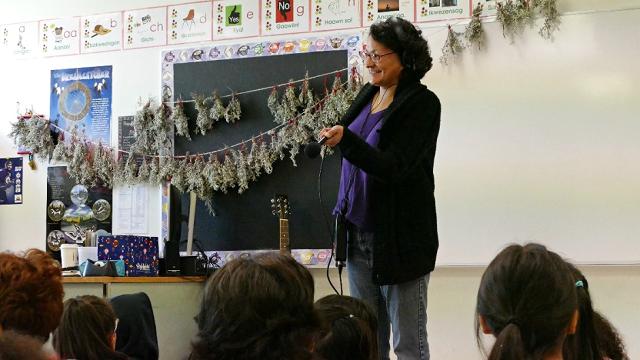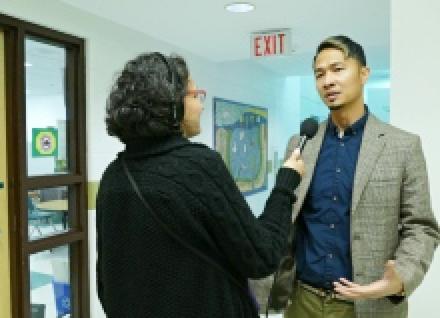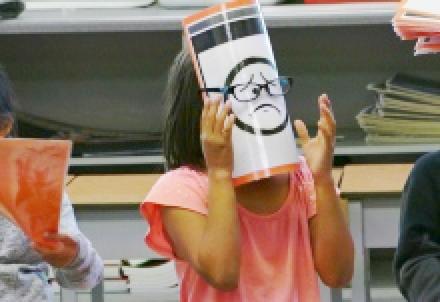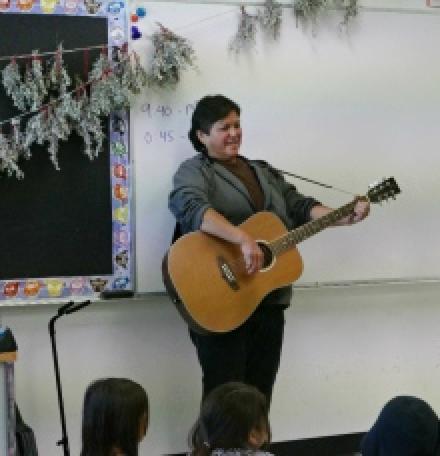 |
Canku Ota
|
 |
|
(Many Paths)
|
||
|
An Online Newsletter
Celebrating Native America
|
||
|
October 2017 - Volume
15 Number 10
|
||
|
|
||
|
Elementary School's
Ojibway Language Program So Popular It Needs More Teachers
|
||
|
by CBC Radio
|
||
The sound of kids learning the Ojibway language fills the hallways at École Riverbend Community School in Winnipeg. Singing, speaking and playing in Ojibway, or Anishinaabemowin, is part of the bilingual curriculum for kindergarten to Grade 4 students at this school. "We're noticing that a lot of kids don't have a connection to their cultural background. We are noticing that a lot of people are losing the language," said vice-principal Jennifer Lamoureux. "That connection to home and to your family is really important so we wanted to revive that.We wanted to hold on to the language. We wanted to encourage the children to be speaking their language and families as well."
The bilingual program was introduced last September, but principal Fortunato Lim said it's been so popular they've had to start a waiting list. "We have many of the families outside of our division even, that are wanting to come in. Some have moved into our community just to be part of the Ojibway program." The school currently has three fluent speakers and a cultural teacher who is learning along with the students. He said the program was created after elder Mary Courchene and Kevin Lamoureux, associate vice-president of Indigenous Affairs at the University of Winnipeg, spoke to educators about the importance of revitalizing the language.
But Lim said finding enough teachers that are both fluent in the language and can teach is a challenge. In fact, in the program's first year there was no curriculum so the teachers were at the forefront in creating it. Lim said choosing which of three dialects to build a common curriculum around is another challenge. Despite the challenges, Lim said the ultimate goal is to offer Indigenous language all the way up to grade 12. "So when the kids graduate from high school they have the language from kindergarten to grade 12. We know that it is just going to continue to grow." Lamoureux said the kids are proud and love learning and sharing the language with their families. "They're excited about it and it makes them feel a sense of belonging here at school, to be learning something together and to be reclaiming that."
|
||||||||
|
|
|
|
||
|
|
||
| Canku Ota is a free Newsletter celebrating Native America, its traditions and accomplishments . We do not provide subscriber or visitor names to anyone. Some articles presented in Canku Ota may contain copyright material. We have received appropriate permissions for republishing any articles. Material appearing here is distributed without profit or monetary gain to those who have expressed an interest. This is in accordance with Title 17 U.S.C. Section 107. | ||
|
Canku Ota is a copyright ©
2000 - 2017 of Vicki Williams Barry and Paul Barry.
|
||
 |
 |
|
|
The "Canku
Ota - A Newsletter Celebrating Native America" web site and
its design is the
|
||
|
Copyright ©
1999 - 2017 of Paul C. Barry.
|
||
|
All Rights Reserved.
|
||



